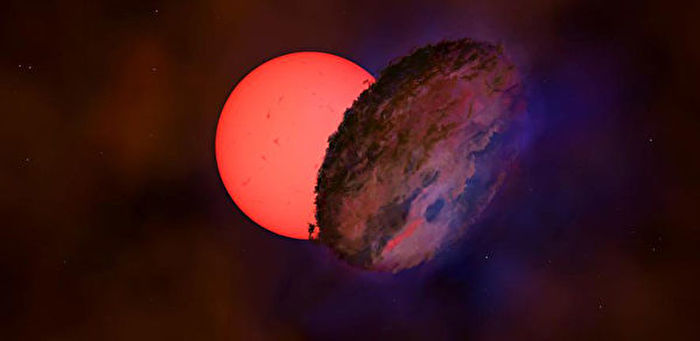[Epoch Times June 18, 2021](Epoch Times reporter Di Rui compiled a report) Scientists recently discovered a giant star that flickers in a strange way near the center of the Milky Way. Its brightness suddenly decreased by up to 97% within a few hundred days, and then gradually returned to its normal brightness.
Researchers discovered this strange star based on data collected by the European Southern Observatory’s (ESO) Visible and Infrared Survey Telescope (VISTA Variables in the Via Lactea survey, VVV) for many years.
This star is more than 25,000 light-years away from the Earth and has a mass about a hundred times that of the sun. It is located in the constellation Sagittarius near the center of the Milky Way. Scientists call stars whose brightness changes periodically. But the brightness of this star is different from any known variable star. Scientists call the unknown variable star type WIT (what is this) celestial body, so this star is numbered VVV-WIT-08.
One of the researchers, Leigh Smith of the Institute of Astronomy, University of Cambridge, said: “The brightness began to decrease in early 2012, and it was basically invisible in April, and the brightness gradually recovered in the following 100 days.”
Since the area where VVV-WIT-08 is located is close to the center of the Milky Way and is an area where a large number of stars gather, the researchers believe that an unknown celestial body may just move in front of it and block it. However, simulations conducted with the model show that unless there are a large number of such randomly floating opaque and giant objects in the Milky Way, this guess is less reasonable.
Researchers believe that the more likely reason is that there is a planet orbiting near the star, or there is another star as its companion to form a binary star system. Moreover, there should be a huge dust disk around its companion star or orbiting planet, causing it to block its light when it passes in front of VVV-WIT-08. From our perspective, it looks like this star has a solar eclipse.
Research estimates that this dust disk is quite large, with a radius of at least a quarter of the distance between the earth and the sun, so that the brightness of VVV-WIT-08 can be reduced so much.
Another star known to have a similar pattern is Epsilon Aurigae (Epsilon Aurigae), which is blocked by a huge dust disk and blinks once every 27 years, but its brightness is only reduced by 50% each time. Another star, TYC 2505-672-1, belongs to a binary star system with a dusty disk around its companion star, causing it to flicker every 69 years.
The project team has not been able to determine the time for the next flash of VVV-WIT-08, which is estimated to occur in the next 20 to 200 years.
The research was published in Monthly Notices of the Royal Astronomical Society on June 11. ◇#
Editor in charge: Ye Ziwei
.
